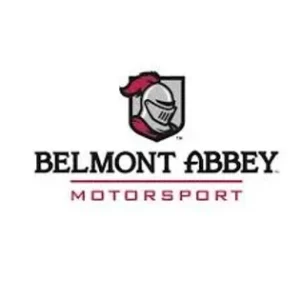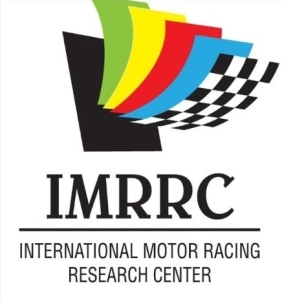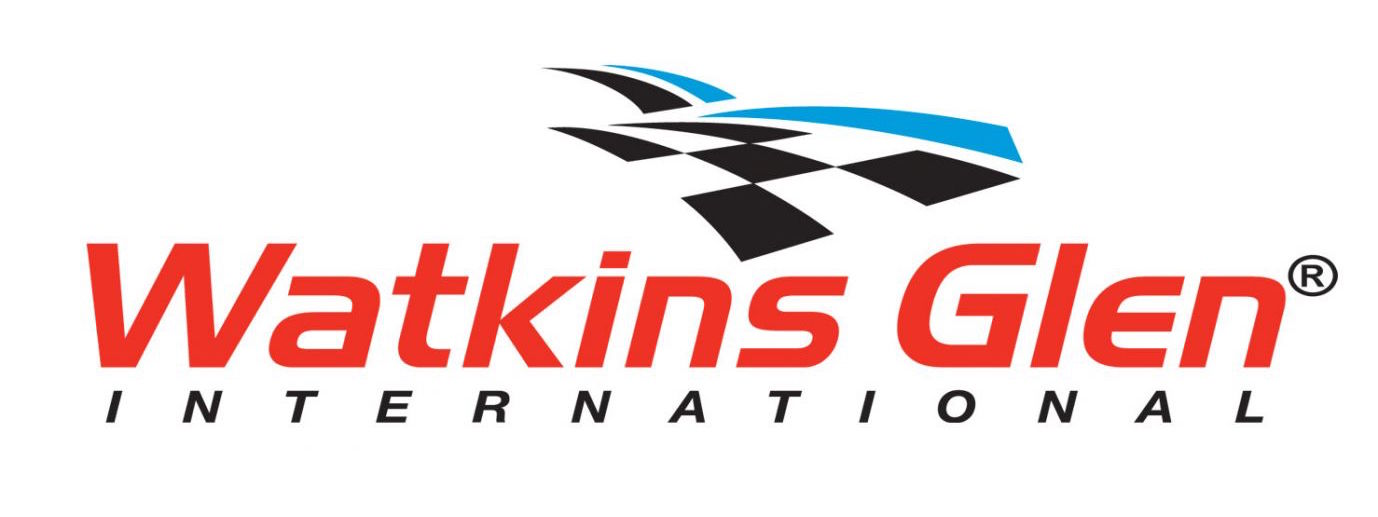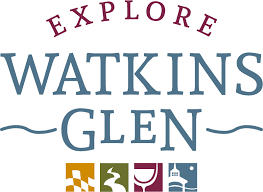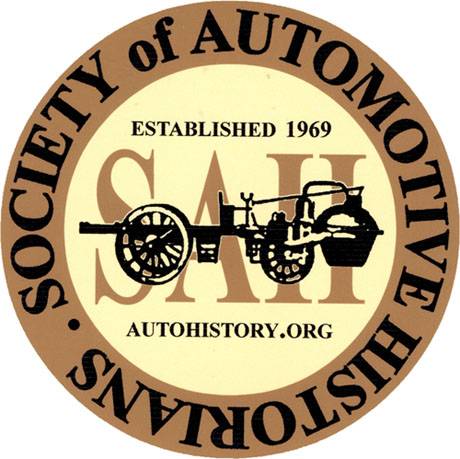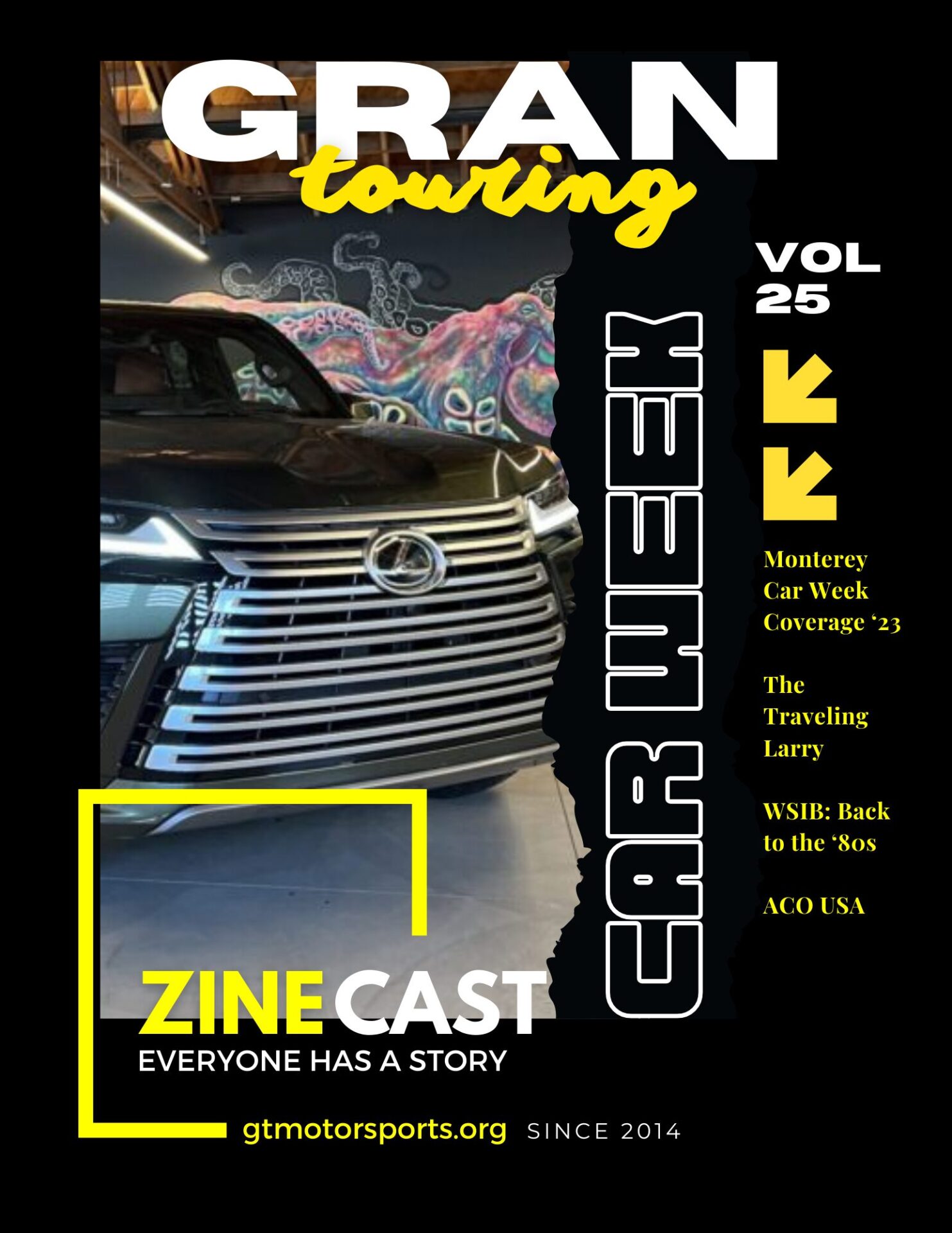[00:00:00] Break/Fix’s History of Motorsports series is brought to you in part by the International Motor Racing Research Center, as well as the Society of Automotive Historians, the Watkins Glen Area Chamber of Commerce, and the Argettsinger family. Lessons Learned, a pedagogical approach to teaching motorsports history, featuring Quinn Beekwilder and Trey Cunningham of Belmont Abbey College.
Quinn Beekwilder is an assistant professor and coordinator of the motorsports management degree at Belmont Abbey College. Having come from a decade of working at Charlotte Motor Speedway, he wanted to give back to the motorsport program at Belmont Abbey that got him there in the first place. He has a unique perspective of being one of the first graduates of the program and is able to address concerns and direct the program for the greater benefit of current students.
Motorsport history has always been a passion for Mr. Beekwilder. The approaches that he takes to the course are crafted to focus on the historical development of NASCAR while incorporating experimental activities [00:01:00] to support the curriculum. The students refer to Mr. Beekwilder as. The fast van driver. Dr.
Cunningham is associate professor and chair of the department of sport and motorsports management at Belmont Abbey college. The college offers a four year undergraduate academic program designed to prepare aspiring professionals and leaders for a career in the motorsport. The presentation will discuss Belmont Abbey College’s pedagogical approach to introducing and reinforcing the history of motorsports throughout the entire curriculum.
Moreover, Dr. Cunningham’s presentation will discuss the many perceived lessons learned and ever evolving adjustments made along the way in the department’s efforts to successfully prepare students to become lifelong learners of the history of motorsports. All right, folks, up next, Lessons Learned, a pedagogical approach to teaching motorsport history.
by Quinn Bickwilder and Trey Cunningham. Gentlemen. My name is Trey Cunningham. I am the chair of [00:02:00] Sport and Motorsport Management at Belmont Abbey College. This is my colleague Quinn Beekwilder. He’s our program coordinator for Motorsport Management. Quinn is actually an alum of our program and has spent 10 years at Charlotte Motor Speedway working through many ranks and then we finally got him back.
A little bit about Belmont Abbey. We are a liberal arts Benedictine Catholic College right outside of Charlotte, North Carolina. We have a Bachelor’s of Arts degree in Motorsport Management. We currently have 40 students that are with us on campus for this program. In the fall, we are starting pending SACS COC approval, our accrediting commission.
We are starting an online MBA with a concentration in motorsport management. Our program specifically focuses on business management, communications, marketing, financial, and operation sides of motorsport industry. We do have a little bit of a history as well. We say our founding [00:03:00] fathers of the program is super promoter Humpy Wheeler.
His father has been associated with the school for a very long time, was a coach and athletic director at Belmont Abbey. The first course was called Racing Management in 2007. So, we have been teaching classes for A little over 15 years revolving around the business side of racing. We really got a nice break in promotion when the Wall Street Journal published an article referred to as the Grease Monks.
Once again, we are a Benedictine college and owned by Benedictine monks. And that was published in October 2007. And so that gave us a lot of nice publicity to the start of the program. Several guiding principles. And I’m going to start with the middle one first, and that is to create and maintain a deep integration and connection with the motorsport industry.
Obviously, we are located in greater Charlotte. We consider Charlotte a great location and center for motorsports here in the [00:04:00] United States and maybe even globally. We are continuously out trying to build and create these connections with the industry, much like the reason that we are here in Watkins Glen.
The next one would be provide a sustainable experiential learning and networking opportunities. We believe this is very important for them to get their foot in the door and have wonderful experiences, network with industry professionals, and learn from that standpoint. We require our students to do internships.
Most of them do multiple internships at multiple locations in the Charlotte area or back home. And then lastly, we feel that it’s deeply important to develop the entire student. It’s guided by our faith as a Catholic college, and then obviously some of the Benedictine hallmarks of stewardship, community, and discipline.
And this is where the history portion of the program comes in, is that we believe that the students should learn the history. of the motor sport industry so that they are able to be good [00:05:00] stewards as the industry has been handing over to them as well. So, these are our guiding principles. Mr. Beekwater will now talk to you a little bit about the actual classes that we have related to history.
All right. Thank you very much. I chose this quote here by Burr Macintosh, who was originally a photographer and early magazine producer in the early 1900s. The comment talks about a big far reaching sport that was just developing, and he knew it was going to be a constant source of delight, satisfaction, and pride to us all.
And he was witnessing at the time the speed trials being held at Ormond Beach. This is where it began. So how do we cover a sport that started in 1894 in 16 weeks? Hmm. It’s gonna be tricky as I usually tell my students, buckle up. We cover many different aspects of motor sports. I try to give an entire approach from the start all the way through up to last weekend’s race.
So really, I reached far back. I talk about the Gordon Bennett Cup, whose equivalent prize money would be around 2. 3 million for winning an absolutely [00:06:00] astounding amount of money. The first time that motor sports was really threatened, even to be canceled, if you will, the Paris Madrid race of 1903. You had 224 cars that entered within the first 350 miles, half the field was out, and unfortunately, 8 people were dead.
The government of France steps in, stops the whole event, never even makes it to Spain. And it would be nearly 24 years, almost a quarter of a century before public road racing would come back again. The Mille Migliae would kind of picked up that torch. Italy kind of gets its rise to fame. A thousand mile race that saw the rise of Ferrari to greats like Nuvolari.
The Targa Florio down in Sicily. Having off and on running from 1906 all the way through 1977. Monaco trying to entice people to come and visit this small little nation at the bottom of France. And the Germans not to be outdone, you know, creating the Nürburgring. Which you can still go for about 20 bucks and drive on yourself today.
These are the first great spectacles we talk about. But there are plenty of people that are involved in this. And so we move on to the drivers. But there are so many drivers out there. [00:07:00] Who do we cover? Just a brief smitten of who we cover. Tazio Nuvolari, who I mentioned previously with his impossible victory.
With his underpowered Alfa Romeo versus the Germans in the 30s. And also a never quit attitude. He was qualifying for a race on motorcycles. He broke both his legs in qualifying and the next day he had his mechanic strap him to the bike and he went on to win the darn thing. That’s a never quit attitude.
Juan Manuel Fangio, you know, at the early day onset as the first five time champ, really, of F1 racing, and still has the winningest percentage of an F1 driver. A. J. Foyt, an American driver, the only one to have ever won the Indy and Daytona 500s, Daytona and Le Mans 24 hours, and Sebring 12 hours. Mario Andretti, goes from racing in dirt tracks in Pennsylvania, to USAC, to F1 championships, and then all the way to Pikes Peak.
Louis Smith. The first lady of racing. The story goes that she was at the beach race in 48 and race the family car and flip the darn thing would go on to win multiple events in different formats. Michael Schumacher, the first seven [00:08:00] time champ Airtron Senate. Need I say more? And Lewis Hamilton, who still does say has a 62 percent chance to podium every time he gets on to start.
Even the other seven time champ only had about a 50 percent chance to podium a sampling of the drivers that we try to cover more in depth, obviously. What I really also tried to point out is the event in Le Mans. They’re coming up on their 100th anniversary as, the racing is not for 100 years as interrupted by two world wars, but their 100th anniversary is coming up.
There have been so many books and competitions that have, between, uh, famously Ferrari and Ford, and Audi versus everyone, and then also multiple movies have been made, books have come out. There’s something enduring about that. ultimate question of how far you can go in 24 hours. But it’s also really important to touch on the fact that motor sports almost died again in the 55 Lamar race.
Where Hawthorne driving his Jaguar pitted late, and unfortunately, LeVay driving a Mercedes was launched into the crowd and killing 83 plus people. But the craziest part is, the race continues. It was only 3 5 minutes into a 24 hour race, and [00:09:00] it kept going. There are literally dealing with the folks there and the racing still goes.
Mercedes would eventually pull out at 2 a. m. and not returned to motorsports until 1987. But these are the types of influential things that happened in one events. I mean, Switzerland still doesn’t allow motor sport events because of this event. There’s a really big, important event. But these tracks, these places that kind of have these hollow ground, we go into tracks themselves.
If we say things like Watkins Glen, Sebring, Circa de la Salle, Brooklands, Monaco, just the words and names themselves kind of conjure up images. But what is it about these places? Is it the surface they actually race on? Oswego, even. Uh, you know, is it the asphalt, the dirt? Is it the banking, the chicanes, the apexes?
What makes them so special? Why do people keep returning to them? Why do whole families and generations of people follow through and always attend the same events year after year? There’s gotta be something special about them. And even places like Darlington. But that kind of rolls into what we teach and also as NASCAR.
A third rate joyride for the working [00:10:00] class, as it was originally referred to by the AAA. How do you condense all of NASCAR’s history into just a few presentations? I try to break it down in three key modules. There’s the 1936 to 49, where you really have the first family of racing, the flocks, three brothers and a sister who would go on to compete and be the only…
Four siblings that actually competed on the same track. Their sister won, by the way, World War Two would intercede so much technology as far as training and such, you know, kind of came out of that for the mechanics that would come back from the war and use their skills to improve the vehicles that they raced in.
The first national champion stock car circuit. Bill France is kind of proof of concept run in 1947 that was originally then brought to the streamline to say, Hey, I can pay out the money. I can run the races. I can do the insurance. Let’s go ahead and form this next thing that we’re going to call NASCAR.
And then the next big iteration, 1950 to 71, Darlington, South Carolina, getting a super speedway. 1950, the first super [00:11:00] speedway is built in NASCAR, and it’s a funny little shape, if you ever will see it. And the reason, because there was a minnow pond on a corner that they sort of shifted the track to because the landowner didn’t want to ruin his minnow pond.
And also, the guy who eventually won the race, because NASCAR had never done a 500 mile race. 50 miles, 100 miles, that was their bread and butter. But it was a guy who had competed at Indy and used truck tires to actually beat them all out. the kind of the first rick matching uniforms, painted to bring in an african am his team as well.
We talk leaving. Basically 1955 w
a little rocky for big co in motor sports and unfort and then a race in Martins another two or three fans And so that was a big gaping hole. We talk about those second family racing, the Lees, Winston cigarettes, how they lose TV advertising in that. But they got NASCAR. That was a big change to our sport as well.
1972 to present was that last kind of big block of [00:12:00] time where a blizzard brings NASCAR to the masses lights, you know, under one hot night, all of a sudden go night racing professionalism in the pit crew with the rainbow warriors. Of course, Dale Earnhardt senior’s death, Jimmy seven time and development of the cup car, NASCAR media and the frances.
You know, these are some of the things we touch on to kind of cover the history, go a little bit more in depth with NASCAR because that’s kind of where we’re at. We do also cover open wheel racing in our class. We mainly focus on the first Indy 500 and really the splits between AAA leaving, USAC forming, CART and USAC.
Kart IRL, Champ Car World series, and then finally reunification in the IndyCar series as it is today. We also try to ask the question, if they’d stayed together throughout that entire time period, would they be more popular and kept a consistent fan base to be more popular than NASCAR is today? Or, because of all these splits and disunification, did that give NASCAR a chance to rise up and beat them out of their own game?
For attention, that is. We also covered the NHRA, so all the impetus of what’s [00:13:00] happening on the West Coast, everything that kind of happened on the East Coast we just previously talked about. But really it was all this talent coming back from the wars, guys who had worked on planes and tanks and trucks, were now tinkering with old cars and, you know, making them go faster.
Southern California Timing Association is informed or formed around 1948. They hold their first land speed trials out in the Bonneville Salt Flats. C. J. Pappy Heart takes a spare side runway and creates the Santa Ana drags. Wally Park sees all this. He had been involved in time trials, creates the N. H. R.
A. And they go racing. They had their first event in Pomona. And they have their championship in the middle of everywhere, trying in Great Bend, Kansas by 55. The Safety Safari, spreading this gospel of speed across the entire country. When all these places wanted to have that badge of NHRA in drag racing, they traveled to these locations and made sure that they qualified for the insurance coverages.
Make sure that things were safe. And of course, Darren Garland and his funky rear engine. You know, who would have thought about that? I think he was tired of losing feet. So that’s the type of history that we cover in our class in 16 [00:14:00] weeks. I’m going to turn it a little bit over to Dr. Cunningham again. I don’t think I can pass that final exam.
You can tell the depth that Quinn goes, does a wonderful job teaching these undergraduate students with this MM 200 class. Really the next question and the reason that we’re here is, you know, how do we reinforce These historical concepts throughout the rest of the entire curriculum. And so we wanted to go from instruct structivism to constructivism through several different methods, right?
We use case studies. Uh, one of our adjunct instructors is vice president of communications and marketing. for Roush Fenway Keselowski. He was there during the Ryan Newman incident and so Kevin brings some of those experiences back into the classroom and then also compares that to other historical events such as Ryan Newman’s wreck several years ago.
We rely very heavily on guest speakers. Many times it’s, they have topics related to history. Another one of our adjuncts is Matt [00:15:00] Yocum. He teaches our sport broadcasting class and he brings in Pam Miller, Daryl Waltrip, a lot of very well known names who come in and talk about the importance of most sport history.
We also do reflection papers and presentations that reflect back on where we are now, what they have seen in today’s society, and it attracts. and how it was in the past. Before COVID, we did a little bit of travel, engaging of the senses. I like to say being there at the track, understanding what is taking place in the media center.
Many of those types of things. We did some networking and we also tried to teach the students how important it was that they are needing to be able to adapt to change. However, during COVID, Quinn and I were, I wouldn’t say we were bored, but we were very anxious to move our program forward. And we came up with some ideas to go from a motorsport program 1.
0 to motorsport program 2. 0. We wanted to find a way to bring the [00:16:00] history to life. We kind of wrote down some challenges. One was, we wanted the students to recognize what makes something spectacle or entertaining so that people will spend money within the industry. We wanted to find ways to network with influencers outside of our normal bubble of Charlotte.
We wanted the students to experience the endurance, the physical endurance, and the flexibility that is required to be a part of a weekend race. Observe tracks during the operations. And most importantly, we wanted them to see the history that we taught them in the past, that we wanted them to contrast that with how business models have evolved over time so that they’re aware of, they’re the ones that are evolving future business models in their career.
Here’s the plan that we came up with. So I approached Trey toward the end of 21 saying we need to go to more races. And so I told him my idea for one to two races and he said, you know what, let’s make a class out of it. So we created MM390 Professional Development in Motorsport. We picked several events that we thought that were not as…
[00:17:00] Fully packed as attended as other events would be if we go to the Daytona 500 FaceTime with executives or you know People actually who would matter for their networking career for our students would be unavailable But places like the 24 hour of a Rolex at Daytona There’s a lot more flexibility same thing with like the Indy race at Texas Motor Speedway and even the four wide nationals at Z Max Dragway, and so that’s what we did.
We traveled we’ve created a class. We took ten students put them in vans And we drove down to Florida. So we drove down to Florida, you know, we met with George Levy, who runs the Motorsport Hall of Fame of America. Got a fantastic tour from him. And we mentioned that we were actually going to the North Turd Grill.
And he said, you know what? I know someone who’s doing a fantastic radio show called Legends of Racing by Buzz McKim. And said, why don’t you guys head on down there and check it out. And the next day, there we were. It was a fantastic show, Buzz. While we were there and learning about that, they told us that there was still a portion of the old A1A that was still part of the original beach and road course that you kind of can see there.
And we traveled down there. I did lose into a foot race with my students, but, you know, that’s [00:18:00] okay. And so, we went to the Streamline Hotel where NASCAR was founded. And it’s really just noticing and really living and experiencing that history that they had taught about and been read about and took a test on.
But we’re now actually seeing it physically and in person. We also were able to connect with a lot of industry leaders from Tom Dunan to Kevin Kennedy with Ford Performance Marketing, some of our own grads who are in NASCAR actually and Haley Deegan. We give it, we got hot laps with her and because it was kind of a less attended event, the students actually got to interview her for a student project invited in the garage from GMG racing, saw the entire Jackson Marketing runs all the Michelin tires and wheels with Scott Taylor.
He showed us around and. So the whole back end of like what goes on for the races and it was just really kind of that in depth field, the different fields they can go into, the different positions they could have, the different experiences they can go with. Out to Texas Motor Speedway is a very long drive, a very fulfilling drive.
We stopped by Talladega Speedway at the Mckeague Wilburn Research Library and also the International Motorsport Hall of Fame. Saw a vast collection that was out there and one more [00:19:00] NASCAR things we saw. There were two urns right by The right hand side of that sign just sort of left out there. It’s a very NASCAR thing to do.
And once we got to Texas itself, Rom Ramage was able to kind of give us the keys to the kingdom. He was the president of the track at the time. And we met with all his top level executives who run, you know, from marketing to PR to track operations and basically experience a phenomenal weekend. So we learned a lot.
We’re still in the process of developing, fleshing out this more about what actually was learned, right? One is we learned that the more flexible that we were, it ended up creating more learning opportunities. We had meetings set up at specific times, throughout the specific events, and All of a sudden we’d get a text or a phone call saying, Hey, I was supposed to meet you at 9 a.
m., but I’m not, now I’m not available till 1130. Okay, so how do we move 10 people around the pits? We needed to be very flexible. The students need to learn that because that’s real life experience. We also realized that professionalism is now a priority. The first couple of events that [00:20:00] we went to, students showed up in their, what they refer to as their vintage Mark Martin shirts.
We then decided we’re going to, Get all the students polos and jackets, and we’re gonna try to at least buy them some professionalism, buy them some confidence along the way. So when we showed up places, we looked a little bit like we belong there. So we were really instilling that professionalism within our students from day one.
We totally reinvigorated our alumni. We had alumni that started seeing things on social media. Alumni we didn’t even know we had. They came out of the woodworks and have been very supportive. For example, Michael Hayda is the vice president of corporate sales at NASCAR in Daytona. He actually took time away from his day and gave us a personal tour of that area around the NASCAR building.
We realized how important it was that building a family and a team atmosphere was. In cohesion, these students are going to be spending the rest of their lives in the industry and no better networking and connection than their own classmates that [00:21:00] they set 12 hours in a van with it. We also realized that we needed to stop doing things with juniors and seniors and start focusing on the freshman and sophomore.
And so what we’ve been able to do is align all classes from the very first day that a student enters on campus to the day that they graduate. They all work and move together in many of those activities. And most importantly, the thing that we thought was going to be the most difficult actually became the easiest.
And that was that industry professionals were more than willing to give their time, to give back, to give advice, to be flexible themselves. And it was, it was quite the blessing, um, in those events. Uh, we have a lot of other great things planned. Quinn and I truly believe that there’s someone or several of you in this room that will help us bring our program to the next level.
So we look forward over the next two days to speak to many of you to hear your ideas on how we can move this forward. Alright, that’s the end of our presentation. Do we have any time for questions? How useful have you found the [00:22:00] NASCAR Hall of Fame in to helping you in your program? Oh, absolutely. The NASCAR Hall of Fame is in Charlotte.
We take multiple trips there a year. One of the class that Quinn teaches that M. M. 200 history, culture, philosophy, sport. There’s an annual trip for all of those students in the spring. And there’s a lot of events that take place. I think just last week, the E. NASCAR championships were held at the Hall of Fame.
Dale Jr. Was there to present the award. The students were there, got the pictures with him. It was a great event. So we do utilize the NASCAR Hall of Fame. We’re super blessed to have it so close. We utilize it as much as we possibly can. I have a quick question about the buy in from your colleagues at the university.
How hard a sell was this when you approached the university administration and said we want to do a motorsports degree? It seems like, I know the institution where I teach, it would be thems fightin words to try and come up with that kind of a program. I’m just curious as to… how smoothly things [00:23:00] went for you folks.
Super smooth. Once again, Humpy Wheeler was on our board of directors and 15 years ago and introduced that concept to our president, Dr Thierfelder. Our administration doesn’t know about a lot of this stuff, to be honest with you. But what a blessing. They trust that we’re going to do what’s right for the students overall, that as long as we’re developing the whole student beyond just what’s in the classroom, then We don’t really have much feedback, and our provost was the former board of motor sport management chair like myself, so we have a full support from top to bottom.
I was just going to say I wish this program had existed 50 some years ago. I used to have to cut classes to go to races. And now I could actually take it as a curriculum. Where were you guys back then? They do still cut classes. Every once in a while I’ll have to call a professor that’s kind of questioning why they’re missing so much.
And I’ll say, this is super important. This young lady is about to go meet Lynn St. James at the Women With Drive conference a couple weeks ago. And I promise you [00:24:00] this could change the trajectory of her career. Could you please let her take that exam another time? You’ve got a good groundwork. I’m very impressed, to be very honest about it.
So where are you going to be going in the future expansions? What we’re focusing on for the future is really kind of that re engagement of the alumni. That we have a lot of success stories who are out there in the industry already. I think there was a lack of reaching out to the alumni earlier, and so just reengagement of them, kind of bringing them back in the program, and a focus more on that team building aspect, so that once you graduate, those juniors, sophomores, and freshmen can reach out to you and then say, hey, I’d really like to come shadow you.
I’d like to see what that experience is like and create just a cycle of rinse and repeat, if you will, emphasizing these early spring classes where we go on the trips. You know, it was really important to us to establish those networks and try to grow them and then just solidify the foundation that we’re at and kind of keep growing from there.
And the numbers are showing it. Our NBA with a concentration will be fully [00:25:00] online. So we’re looking to expand with remote instructors as well as remote students. We’ll see where that goes. Yeah. Do you have any involvement with the, uh, mechanical and restoration aspects, or do you leave that to other institutions?
UNC Charlotte is right in our backyard, and they have a phenomenal engineering program. That’s something that we’re kind of not set up for. Uh, you know, we don’t have the facilities at all, uh, to teach engineering or to turn wrenches. We would like to, but, you know, it’s really, we’re so, more focused on the soft skills rather than the hands on skills.
Although our students do have their own lemons team that they run themselves. So, whether the car makes it there or not is. Totally up to them. So you said you covered open wheel and circle track and a couple of different asphalt cars. But you didn’t say anything about dirt. Why don’t you cover that and do you think that limits your students?
We do actually have a handful of actual people who raised dirt themselves who come through our program. You know, I did have to cut a little bit of my presentation short for time wise to cover, you know, the world of [00:26:00] outlaws is right in our backyard. Finals are this weekend, you know, being run, uh, Charlotte.
You know, we do love dirt too, but, you know, as far as coming up Northeast, that is definitely something that we can start including into, like talking about Oswego and Eldora. That’s why it’s difficult to cover motorsport history as a whole. You can have an entire semester dedicated to dirt and its various formats and racing.
So, it’s not that we don’t like dirt. We, we love dirt. You know, I love taking q tip and getting that mud out of my ears after an event. But, you know, it’s, it’s something we do briefly cover. Well, it sounds like initially the program was more based on the management side, but you’re starting to delve more into.
Exploring the history of racing. And I was curious, as far as job placement. Do you have any type of figures as far as job placement? Like what percentage of your graduates wind up landing positions in NASCAR? Or if they’re finding positions in other types of motorsports? And then finally, what are maybe one or two of the types of jobs that they’re being hired to do?
Because you mentioned UNC Charlotte. [00:27:00] They have the Technical School, the Engineering School. You mentioned like, LaHetta. Great guy, um, one year alumni, uh, because he was at the NASCAR Hall of Fame before he went over to NASCAR. Are there more stories like Mike, can you provide some more examples of the types of jobs, and the, and the amount of placement?
A percentage of placement you’ve had with the program. Yeah. When I was digging into the alumni, trying to, we did a alumni mixer and networking event last year as part of this professional development program the students put together. And basically, combing through all the records and trying to figure out everyone through their LinkedIn pages and just trying to reach out and contact them.
Roughly over a hundred graduates or so in that time span. And about half are actually, had made it to the industry. Or were still in the industry, I should say. about three quarters made it to the industry. Some spent a year or two, three years or so, then moved on to another job. But the majority seem to are still enjoying themselves.
We’ve had graduates, one of the head managers at Victory Carding, which is a local carding establishment and, you know, [00:28:00] keeps that ongoing. We have other grads. Ian Moye, who’s now over Penske’s communicate social media. He was Ryan Blaney’s PR rep for multiple years, but he started out as an advisor at Belmont.
You know, a job hadn’t opened up right then, but he stuck with it, kind of persevered through. Jordan Anderson is also one of our grads. He came from a dirt and late model type experience all the way through to now owning his own team. Morgan Overstreet was Chase Elliott’s rep. She’s now with Dirty Mo Media.
Several folks over at Junior Motorsports as well. A lot of PR reps, a lot of social media reps. And actually, the marketing director for Hoosier Tires is one of our grads. Taylor Hull, a professional drift racer, was one of our grads back in the day. And then also, a lot have ended up at Charlotte, myself included.
Spent 10 years there. Tom Vesey, who’s in charge of operations, is also there. Gal down in PRN kind of runs their boards. It’s a wide variety of grads all over the industry, but mostly on the soft skill sides. Hi, you mentioned 40 students in the program currently. What are you hoping to get and how do the students find you?
How do you promote the [00:29:00] program? Because this is obviously a very unique niche. That is the million dollar question. Because it is so unique, it’s hard to kind of go to Goodwill Analytics and select college student motorsport management. Let me spend my money. So in that respect, it’s a lot of word of mouth.
We’re starting to find out that a lot more folks, and kind of like myself, originally I came from California, I had no contacts in the industry, heard about this program, you required three, at the time, three internships, and then, you know, you had these connections, and like, hey, I want to get into this industry that’s very small and tight knit.
They have connections. That’s probably how I should spend my money and that is kind of a recurring theme So we have people from you’ve got two students from New Jersey one from England one from Vermont some from Oregon and Arizona And you know, Michigan and so people Yeah one from the Finger Lakes actually just right up the road all these experiences of I really want to be in it.
I know where I have to be to go to it. We always tell them we never guarantee them a job, but we give you the best chance of getting a job in the industry. 90 percent of all [00:30:00] NASCAR teams are based in there. We have the World of Outlaw Finals based there as well. And so there are a lot of organizations and support, the Stock Car Steel, Hypeco, just a lot of support industries that are around our areas too, that some of our students have ended up in as well.
And as far as additional students. We’d love more, but we know that at some point there’s going to be a larger cap. You know, we can’t have 100 people. How can we guarantee them jobs if 50 people are graduating to get in the industry? That’s kind of probably unattainable. But currently, you know, we just had a rise kind of get nine incoming last year, 15 this year.
And so we’re seeing our numbers definitely increased dramatically, and we’re ready and willing to accept them and teach them. Thank you. All right. Thank you. Thank you, Trey and Quinn.
This episode is brought to you in part by the International Motor Racing Research Center. Its charter is to collect, share, and preserve the history of motorsports, spanning continents, eras, and race series. The center’s collection [00:31:00] embodies the speed, drama, and camaraderie of amateur and professional motor racing throughout the world.
The Center welcomes serious researchers and casual fans alike to share stories of race drivers, race series, and race cars captured on their shelves and walls and brought to life through a regular calendar of public lectures and special events. To learn more about the Center, visit www. racingarchives.
org. This episode is also brought to you by the Society of Automotive Historians. They encourage research into any aspect of automotive history. The SAH actively supports the compilation and preservation of papers. organizational records, print ephemera, and images to safeguard, as well as to broaden and deepen the understanding of motorized, wheeled land transportation through the modern age and into the future.
For more information about the SAH, visit www. autohistory. org.
We hope you enjoyed another awesome episode of Brake Fix Podcast brought to you [00:32:00] by Gran Touring Motorsports. If you’d like to be a guest on the show or get involved, be sure to follow us on all social media platforms at GrandTouringMotorsports. And if you’d like to learn more about the content of this episode, be sure to check out the follow on article at GTMotorsports.
org. We remain a commercial free and no annual fees organization through our sponsors, but also through the generous support of our fans, families, and friends through Patreon. For as little as 2. 50 a month, you can get access to more behind the scenes action, additional Pit Stop minisodes, and other VIP goodies, as well as keeping our team of creators Fed on their strict diet of fig Newtons, gumby bears, and monster.
So consider signing up for Patreon today at www. patreon. com forward slash GT motorsports, and remember without you, none of this would be possible.[00:33:00]
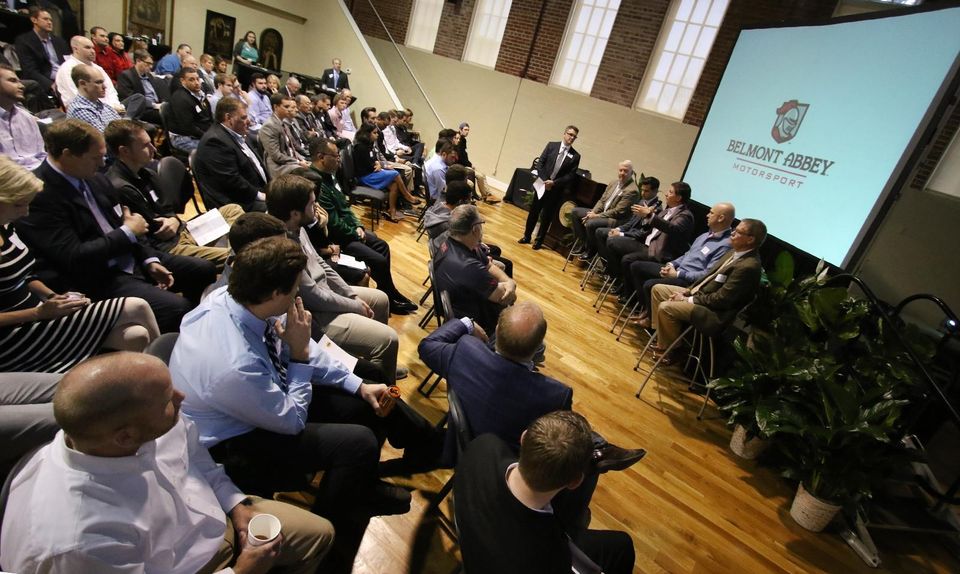
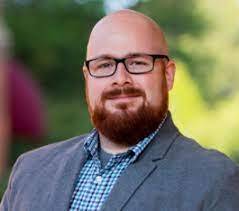
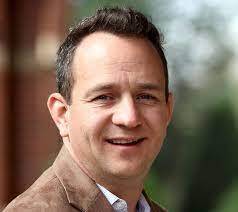
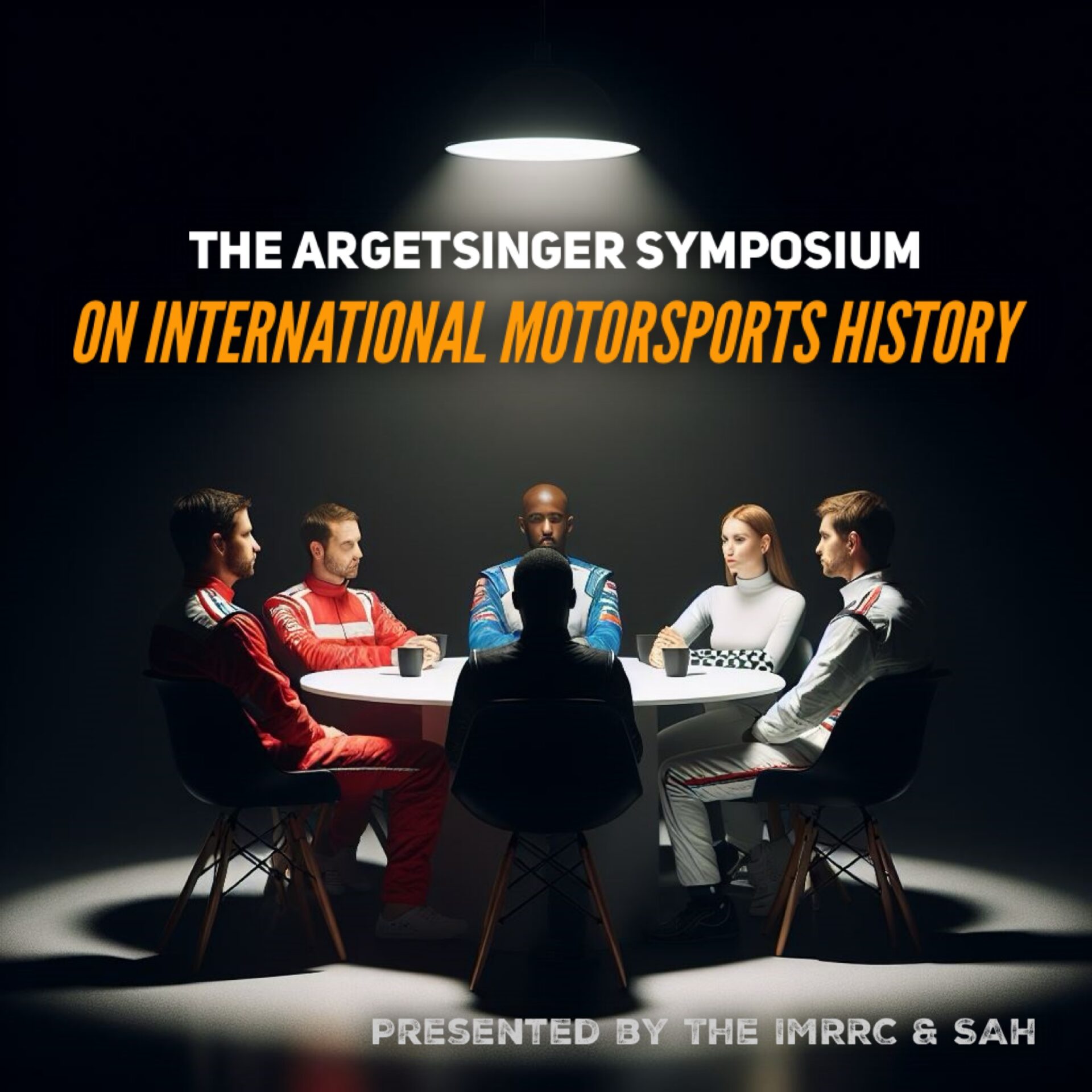 The International Motor Racing Research Center (IMRRC), partnering with the Society of Automotive Historians (SAH), presents the annual Michael R. Argetsinger Symposium on International Motor Racing History. The Symposium established itself as a unique and respected scholarly forum and has gained a growing audience of students and enthusiasts. It provides an opportunity for scholars, researchers and writers to present their work related to the history of automotive competition and the cultural impact of motor racing. Papers are presented by faculty members, graduate students and independent researchers.The history of international automotive competition falls within several realms, all of which are welcomed as topics for presentations, including, but not limited to: sports history, cultural studies, public history, political history, the history of technology, sports geography and gender studies, as well as archival studies.
The International Motor Racing Research Center (IMRRC), partnering with the Society of Automotive Historians (SAH), presents the annual Michael R. Argetsinger Symposium on International Motor Racing History. The Symposium established itself as a unique and respected scholarly forum and has gained a growing audience of students and enthusiasts. It provides an opportunity for scholars, researchers and writers to present their work related to the history of automotive competition and the cultural impact of motor racing. Papers are presented by faculty members, graduate students and independent researchers.The history of international automotive competition falls within several realms, all of which are welcomed as topics for presentations, including, but not limited to: sports history, cultural studies, public history, political history, the history of technology, sports geography and gender studies, as well as archival studies.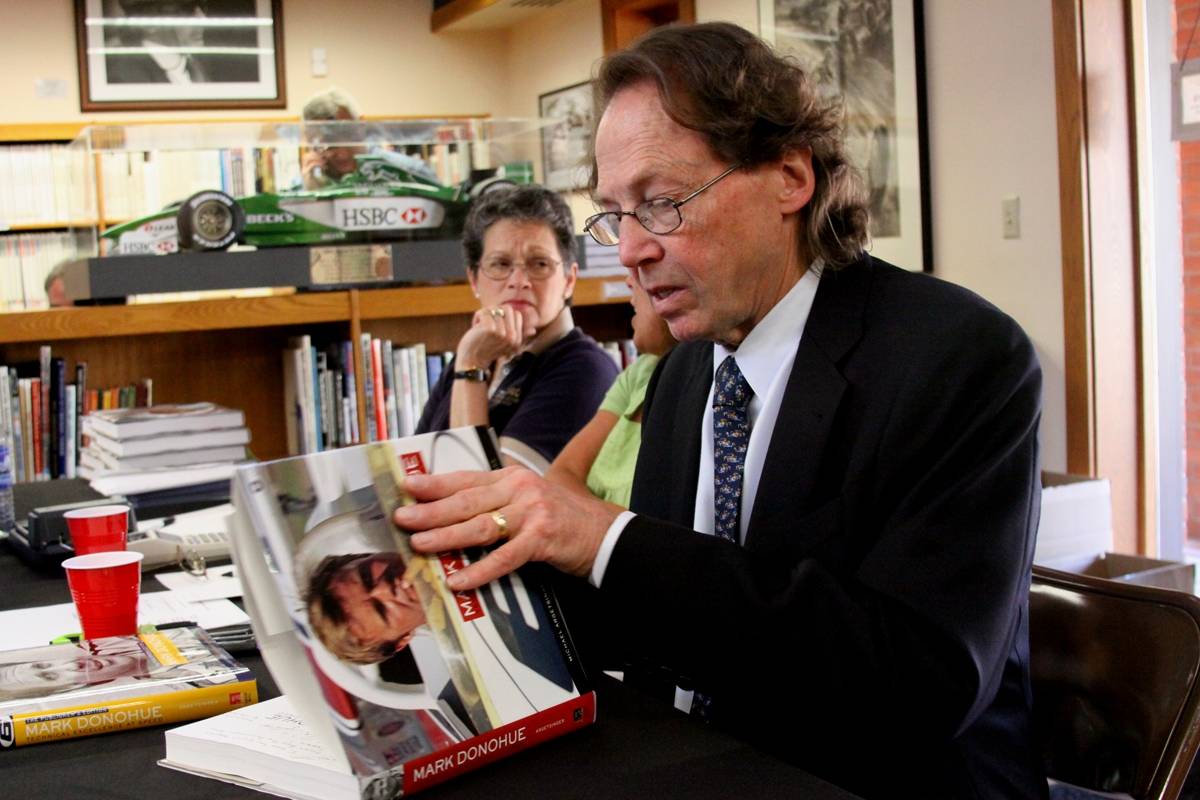 The symposium is named in honor of Michael R. Argetsinger (1944-2015), an award-winning motorsports author and longtime member of the Center's Governing Council. Michael's work on motorsports includes:
The symposium is named in honor of Michael R. Argetsinger (1944-2015), an award-winning motorsports author and longtime member of the Center's Governing Council. Michael's work on motorsports includes:






